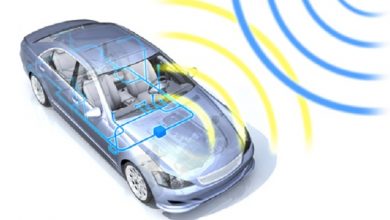Srinath Mukherji, Co-founder & Director of Sana Insurance Brokers talked about the impact of new regulatory reforms in telematics insurance

Srinath has B. Tech from IIT Kanpur and Post Graduate Diploma in Management from IIM Ahmedabad. At IIM Ahmedabad, he was awarded with President’s Gold Medal. He has over two decades of global experience in management and IT consulting, and over 10 years of successful entrepreneurship in micro-finance and housing finance.
Q. What is your view about regulatory approval for insurance telematics in India?
Directionally, I believe it is a right step, because we should take advantage of digital technologies as they emerge and get adopted. I emphasise a lot on getting adopted.
Insurance telematics is a good move, because it will focus on risky driving behavior or car usage. But adoption will be key as the devices themselves will not be cost-free. Secondly, if they are not embedded into the vehicle, whether it is a two-wheeler or four-wheeler, there is a high risk of misuse and fraud when it is based on mobile GPS tracking. I think the real benefit will come when telematics technologies are embedded into the vehicle. That will become more prevalent, once you have more telematics enabled electric vehicles coming on road. Although IC engines vehicle, the high-end vehicles, do have embedded telematics, but how many people can afford them? With EVs, telematics device can become part of vehicle, and insurers or customers can ride on the back of the adoption of technology.
Q. What could be the challenge for insurance companies in implementing Pay As You Drive(PAYD) or Pay How You Drive(PHYD)?
I think two factors. First is the availability of reliable and tamper-proof data. The second is customer willingness to share data with insurers. There is an issue of consent and privacy involved. If insurers are getting information about where I go, what do I do etc., this is sensitive in terms of privacy. Insurers have to make sure that they are careful about the privacy of this data.
I don’t think there is enough statistical modeling in terms of the risk related to roads that you travel. This is still to come where data from many vehicles over the years lets you know that this particular route is riskier. And if you are taking it on a routine basis, your premium should go up. As of now, it is a little bit of guesswork in terms of that kind of risk associated with a route or region. People will fall back on distance-based premiums which is fine, but then the real benefit will come from your driving behavior, which is yet to be available.
Q. How would the PAYD and PHYD evolve?
Pay How You Drive is still some distance away, because of data availability issues, but the simpler model of insurance premium based on distances covered etc. and extrapolating that might be easier to implement. Adoption will happen, but over a period of time with the network effect, when you have many people becoming aware and informed. Now the natural temptation for electric vehicle customers is to see if they can get a better premium by sharing that telematics data with the insurers. This adoption has incentive and no additional cost, no additional headache, we do not have to wait for insurers to come and fix the device in your car and all that. It becomes more natural for EV customers to buy more of these telematics-based insurance, and I think this could be the direction for us.
Adoption is not going to happen as fast as people are expecting. I use the reference of Gartner hype cycle which is going to happen here. To begin with people will get excited and after sometime there will be a fall and finally it will mature into stable technology.
Q. Do you think reduction in insurance premiums will increase its adoption?
If the premium comes down surely adoption will increase. Most of us are cost sensitive people, so this is likely to happen. The question is, how soon? And obviously, this is where the penetration impact will come if it happens soon. I think the related game changer is EV technology because it’s so natural to have telematics on board that customers would say, yeah sure, if I get a discount based on my usage level. They know that probably the car manufacturers are tracking them when there is telematics device on board. They would not mind sharing the data with the insurers to get better discounts. But, it is not immediately going to change the behavior for IC engine vehicle buyer or two-wheeler buyer, Tier2 or Tier3 town.
Q. You mentioned about policyholder data privacy. How willingly will people part away with their data for reduction in premiums?
We have got used to having our data being used for personalization. Anybody using the android phone knows that it is not a big deal in India. I think the important question will be how the regulators introduce the concept of consent. Without that a customer is vulnerable.
To say that Okay, I have taken a telematics device on-board and you (OEM/Insurance) will not use it, but you are actually using it. We know it, you know it. But where is the consent element coming in?
On one hand, you want to make sure you are providing tailored personalized services, on the other hand, how will you protect misuse of data. People talk about blockchain technology for consent, but still it is very clunky in my opinion. Unless consent becomes easy to establish, non-repudiable and tamper-proof. It is still going to be a tricky business.
Q. What is your view about consent for data usage and monetization?
If I get a direct benefit from my data, I am willing to part with it and give consent. The question that you raised is monetization, which is a larger ‘word’ than giving me discount in premium. Can I use the data for other purposes, whether anonymized or non-anonymized mode? Anonymized data is OK because I will say it is part of the cluster, nobody knows where it is being used and what for. But if I am willing to share non-anonymized data that’s a high risk. Say for example it gets into the hand of a stalker or somebody like that. I will be very particular about sharing my data for third party use.
Knowing that the insurer is not criminal in mind, I will probably say, yes use it to give me a lower premium. It is a win-win, you use my data for mapping and risk profiling. I get lower premium cost. But beyond that monetization has risks.
Q. Coming to Crystal ball gazing, where do you see the automotive insurance in next 10-15 years?
I can take the example of Elon Musk end of the spectrum, where there will not be risk anymore. If autonomous vehicles have anti-collision mechanisms built into them, there will be no collision, no accidents and therefore no requirement of insurance. But that’s a little far into the future. I think the path will be somewhere along that line. Electrification of vehicles and AI controlling the driving, will disrupt in ways that we cannot anticipate. I will give you an extreme example; you have every vehicle out there as autonomous vehicle and being managed with anti-collision device and controlled by AI, would there be accidents?
Q. Why did you venture into insurance?
I thought and I still believe that insurance is actually an information business. If you think about it, what is insurance all about? It is assessment of risk-based on information, pricing based on that assessment of risk which is rule engine based calculation. Receiving claims information, taking decisions on them and paying insurance is the perfect example of information technology at play. But I found, that it is not the way people look at the insurance. I do believe in Marc Benioff, who said that you build a business for 5-10 years later, rather than now. I believe that digital technologies have the ability to do the whole insurance business. There is no requirement to have major amount of touch points.
Sana Insurance Brokers, I started because of my experience and expertise in digital technologies. In India insurance is under-penetrated, especially in retail population and to provide and serve insurance services to the large number of people at low cost, requires digital technologies. Based on the experience in financial services, I thought, insurance would be an opportunity to focus on.
Published in Telematics Wire



